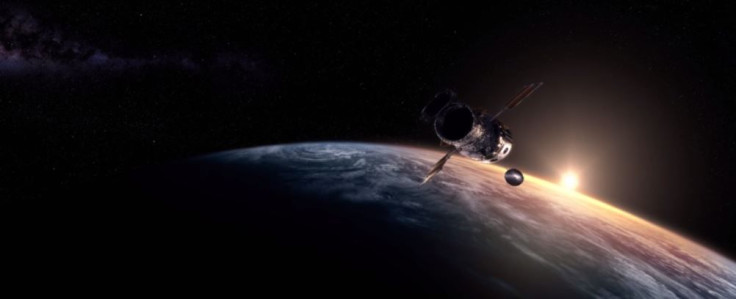From A Tree To A Star, VR Can Connect People To Climate Change, The Universe

How do you get people who live in concrete landscapes to care about their environment and the world in general? Virtual reality might be able to help.
As VR technology takes a sturdier shape and expands to include more and more applications, it may be a way to connect some people, such as those who live in cities, to Mother Nature or even the larger cosmos. When a person straps on a headset, it can transport them from an urban landscape right into another universe they would not have otherwise experienced. A few creators are leading the way, including the teams behind the “Fistful of Stars” and “Tree” projects.
Read: How Stars are Born
Fistful of Stars is a VR experience that allows a person to walk through the Orion Nebula in outer space, using images from the Hubble Space Telescope, and follow a star through its life from birth to death.
“The atoms in our bodies were forged from the furnaces of stars, therefore it is true that we literally are made of stardust,” filmmaker and Fistful of Stars creator Eliza McNitt said in an interview with International Business Times, describing the core idea behind the project. With the VR experience you can “be in a world that you would never be able to experience but you actually feel as if you’re there.” The viewer can help direct their own experience as well, adding to the connection.
For Tree, the viewer becomes the object of the virtual reality experience — and part of the environment.
“It starts growing underground, piercing through the ground, and soon enough you’re gonna start getting branches and you can move your arms, and when you look down at your body you will see the trunk of a tree,” project director Milica Zec told IBT. The goal is “for you to hopefully feel something for the nature.”
Simply reading about climate change may not have a powerful effect on a person, “but this is an experience that it feels like it happened to you,” according to Zec.
As advanced as this may seem, the field has a lot more room to grow. The technology has come close to “getting it to a level where you really feel like you’re there,” Kim Pallister, director of Intel’s Virtual Reality Center of Excellence, said in an interview with IBT Media. Intel helped support Eliza McNitt and other VR projects. “But it’s really only just the beginning.”
© Copyright IBTimes 2024. All rights reserved.





















